| |
'The power of art is its mystery – the meaning is in the eye of the beholder. So when I make a film I think of it as a "trilectic" relationship of image, music, and the viewer. If there are a hundred people that see this film in a theater at any given time, then there could be a hundred different points of view about it.' |
|
Director, Godfrey Reggio |
This quote mirrors Joss Whedon's summing up of his cancelled Firefly TV series... "This is about nine people looking into the blackness of space and seeing nine different things." Vive la difference. Speaking of space, in so many ways, Koyaanisqatsi was my generation's 2001: A Space Odyssey. It eschewed conventional narrative, presented its vast ideas in a way never seen before and was much appreciated while (ahem) naturally high. It even has its own 'star gate' section, assaulting you with a mass of accelerated light effects from a mundane source (it's the way it's shot) and exciting the hell out of you in the process. In those heady days of my early twenties, I didn't need conventional drugs to achieve a dizzying nirvana. I had the visual stylistics of Godfrey Reggio, the music of minimalist composer Philip Glass and my own imagination. Glass's score exploded and cut gut deep inside me in 1982. Punk had left my more delicate tastes flailing around for other (any other) music to champion. After hearing Glass's score for the first of these two extraordinary movies, I was utterly smitten. I may be one of the very, very few that captured the soundtrack to his opera 'The Making of the Representative for Planet 8' by Doris Lessing on HiFi audio videotape taken live off the radio. I should look into that tape's viability. It may be the best recording of an unrecorded masterpiece that still exists. At the English National Opera performance, it was booed at the close. I know this because I was in the audience. I digress. I can cover both films in one review because the work is so distinctive, so closely related and so obviously from one unique collaborative vision. And as both have very few of the elements that make up most narrative movies, this review will be a little shorter than usual. What do you mean, "Hurrah..."?*
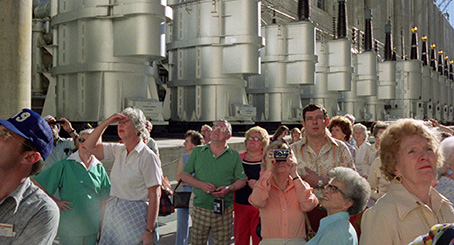
Both Koyaanisqatsi and Powaqqatsi are poetic but critical metaphors about the way we live today (or at least the way we lived thirty-two years ago). Both documentaries (they really are their own distinct sub-genre) take in a range of subjects shot from all over the world and present them with Philip Glass's distinctive music imbuing the images with heart and dare I suggest soul. Glass gives enormous weight to some stunning images of the natural world and playfully enhances the relentless aspects of our lives illustrated by heavily speeded up and slowed down footage. To me, the music provides a larger percentage of the film's emotional resonance. There are no actors, no story per se and no dramatic through lines – or rather none of the type we might conventionally expect. Of course, there's a story but it's more of a mounting disbelief at what our species is capable of and why we weren't using those talents and resources to look after everyone and our own planet and not just serve those with power or money. Both films have a distinct whiff of a socialist point of view (no bad thing and it doesn't surprise me one bit that director Godfrey Reggio has been involved in many progressive political causes in his native US) and you get the impression sometimes that Reggio is in awe at our marvellous and terrible en masse insanity. The two movies are at once a celebration, a condemnation and a portent. Made in the 80s, it's clear that Reggio's vision was spot on. I can only woefully confirm that after reviewing what these films carefully and powerfully predicted, it seems obvious to all that things have become significantly worse.
Koyaanisqatsi (which means 'life out of balance' in the North American Hopi dialect) starts with what looks like symbols of death (research tells us they are not but hey, I can have my interpretation and eat it too) juxtaposed with a symbol of our greatest scientific achievement (the Saturn V rocket taking off reminds us we've actually been off world) and then there's a stunning montage of the most extraordinary landscapes, cloud and water movements. Glass's music is building and building and the cutting is sublime. At 16 minutes and 28 seconds in, we hear the first bars of what's become Glass's signature style. You will never look at a hotdog in quite the same way after seeing the central section of this film. The second half of the movie concentrates on what we are doing on this amazing planet, how we are best serving our time on Eden (not well, it seems) and the movie concludes with how, even with all our power, we are brought low by the indifference of the world. Such is the mesmeric effect of Glass's score, that even when playing extracts, it's almost impossible for me to use the pause button in case it screws up its effect. A casual and appreciative remark from our editor sent me scurrying back to the sequence in question and I could not stop it until the music echoed out... Cinema. Is there nothing it can't do?
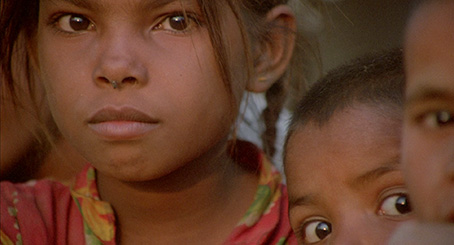
Koyaanisqatsi's sequel Powaqqatsi (which means both 'parasitic way of life' or 'life in transition' in the same dialect), starts with the most extraordinary slow motion sequence of manual workers hauling heavy mud-filled sacks, each covered in a grey sludge slick cut to what must be a startlingly ironic but joyous cue from Glass involving whistles and children's chanting - it's wonderful but those images! I suspect that the editors and director may be tempted to cram in a few more cuts if made today. This is crafted stuff but there's no doubt the majority of the images are cut at a leisurely pace. If the first movie was an Eden corrupted by its residents, the second shows cultures invaded by and spoiled by others' ways of life, parasites indeed. There're a lot more nods to spirituality in this one. Whereas its antecedent was visually and metaphorically bricks and mortar, this one's more smoke and gods. It also features that most famous of Glass's cues, one that's been used in many ways, notably in Peter Weir's The Truman Show (Powaqqatsi's 'Anthem Pt. 2') and in Snyder's Watchmen, the Koyaanisqatsi cue 'Pruitt Igoe' is used to stunning effect off world with Dr. Manhattan.
There are several practical techniques to combine images and music in a motion picture. In most cases the edit serves the characters and plot and then a composer is brought in to add music cues that must twist and contort to the diktats of the timing of the edits. This is why film music sometimes seems awkward when cut adrift from the images it's serving. A music editor is usually required if the cut picture changes in any way (like after a test screening which results in an ending being reshot or such like). Then there's the temp track route in which similar styles of prerecorded music (similar to the ones desired from a composer yet to be hired) are laid against the picture and the editor cannot help be swayed by the music in the timings of his/her cuts. The composer then follows through with his/her version of the temp track. Generally, composers are not fans of this method preferring a tabula rasa to work from. Then there's Peter Weir's one time used method (that I know of). On Mosquito Coast, he hired Maurice Jarre to sit on his synthesizer to produce a very swirly and thematically even music bed that he then had his editor cut to giving the music more power than it would normally have had, had it been a slave to the edit. Weir's a big temp track fan; a temp track that usually becomes the permanent track after money is exchanged for rights etc. Like Zack Snyder, prerecorded commercial music is recognised as part of his directorial style. And boy, do they both love Philip Glass. In TV, we use a great deal of library music (drastically cut budgets I'm afraid) and so the editor usually has some fun cutting to specific cues that everyone knows will be used in the final edit. It does seem counter intuitive that bespoke music scores are the first things to be jettisoned from a documentary or drama's budget, the one aspect of the whole that is proven at teasing out the Holy Grail for all filmmakers - emotion. There is one more way of joining music to images that I know of... the Koyaanisqatsi and Powaqqatsi way. It's called 'magic'.
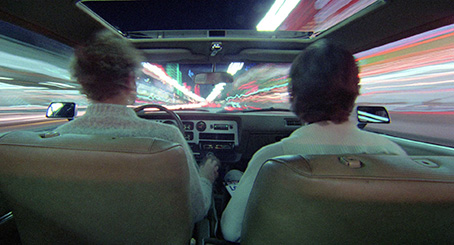
This is the way that exists only in my imagination. It's like watching a zip do itself up in slow motion, each aspect of image and sound knitting together, uniting slowly and magnetically. I sort of don't want to know how the magic is conjured up so I'm not going to research it. But images and music have rarely been partnered like this in cinema and it almost feels like Reggio and his editor would suggest a cut and Glass would come in and let them know how many frames it should be. The editing of both is sophisticated and absolutely pin sharp taking in both languid and frenetic. If the cuts came before the music, then the editor must have been a trained musician. If the music came first (how would Glass know what he was composing to?) then the editor's job was more or less done. And before you ask, it's not all about cutting on the beat although instances of on the nose cutting can be extraordinarily satisfying. If you get to see Pink Floyd The Wall with a good sound system, check out the disappearing teacher in the tunnel as Pink sets off a bullet on the train track. This effect is so perfect it almost produces a physical reaction.
To conclude, this is a pair of movies designed to be watched in the dark with a great sound system, an open, playful and enquiring mind and a sense of wonder. We live on an extraordinary planet and we really are extraordinary creatures, we human beings. Director Godfrey Reggio, cinematographers Ron Fricke, Graham Berry and Leonidas Zourdournis, editors, Alton Walpole and Iris Cahn and composer Philip Glass are together, as a creative force, even more so.
The packaging of a Blu-ray release is not something we usually get to comment on when working from review discs, which are usually white-face affairs with the title and other sundry text stamped on it in Helvetica and cocooned in a plastic or paper shroud. This time around Arrow sent us the full package so that we might admire the care that has gone into its presentation. And admire it we do. As a designer with a fondness for landscape over portrait as a format document, I warmed to the choice of that aspect ratio for the cardboard outer shell, the card and plastic disc covers within, and the handsome accompanying booklet (more on that below), which is substantial enough to sit side-by-side with the disc cases and be almost indistinguishable from them when viewed end-on. And for those of you who like the idea of distinctively designed Blu-ray boxes but grumble about the fact that they don't fit on that shelf you shaped and positioned specifically to house your Blu-ray collection, know that this particular disc is designed to slot in perfectly – it's the regular Blu-ray case height and width, just turned on its side. It really is a nice job – the only thing that surprised me is that if you place it on the shelf with the Arrow Academy logo the correct way up, then the opening in which the discs are stored is situated at the base, meaning that there's a risk the contents will fall out when you take it off the shelf.
Should I quote from the booklet? Hell, why not. "Koyaanisqatsi was scanned in 2K resolution on a Northlight Digital Film Scanner from the original camera negative, with a 1999 transfer supervised by Godfrey Reggio used as a grading reference throughout. Powaqqatsi was transferred at high definition on a Spirit Datacine from a 35mm interpositive struck from the original camera negative. Thousands of instances of dirt, debris, scratches, and torn or damaged frames, image flicker and instability were fixed or improved on both using a combination of restoration tools and techniques." And both films look fabulous. Given that there is a mix of newly shot 35mm, 16mm blow-ups and archive footage, some variance in the image quality is to be expected, but even the weakest archive material looks good and the 35mm footage shot by Ron Fricke, Graham Berry and Leonidas Zourdoumis is often stunning. The level of detail really does take your breath away at times (there's a wide shot of New York in Koyaanisqatsi at 31:27 where every window in every building is clearly defined), the colours nicely rendered and the contrast range perfectly judged, with solid black levels achieved without sucking in surrounding detail. Some small instances of dirt remain on the archive footage and the film grain is more prominent here, but given the range of imagery employed in both films this just feels part of the overall aesthetic. A lovely job that does the mesmerising imagery of both films full justice.
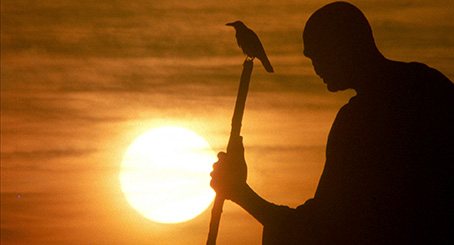
Quote time again. "On Koyaanisqatsi, the original 5.1 soundtrack was remastered at 24-bit from the original Dolby LTRT magnetic tracks, as well as some rediscovered original outtakes. Powaqqatsi's original 4-channel discrete soundtrack was remastered in 5.1 surround at 24-bit from the combined original mix magnetic tracks and the Dolby LTRT, a mix that was created by Philip Glass's music director Michael Riesman. Audio issues such as clicks, thumps and dropouts were manually removed from both soundtracks." On both discs there are two tracks to choose from, Linear PCM 2.0 stereo and DTS-HD Master Audio 5.1, which I'm presuming is the new mix detailed above. And it's a treat for the ears. The difference between the two tracks is immediately evident – the stereo is excellent, being clear and distinct with good frontal separation and displaying no age-related range restrictions, but spend a couple of minutes in the company of the DTS track and it's hard to go back. Boasting a strong dynamic range, chest-punching bass and a round-the-room inclusivity, this is the sort of audio accompaniment that the films really deserve. That said, I would suggest that the DTS loses out a little when it comes to some of the treble elements of the score, which are noticeably more distinct on the stereo track. Either way, move your armchair closer to the screen, crank up the volume, apologise profusely to the neighbours in advance (or better still, invite them round), and let this unique audio-visual experience wash over and envelope you.
Koyaanisqatsi
Introduction by Gary Tarn (3:39)
Filmmaker and composer Gary Tarn – not completely at ease in front of the camera – discusses the experience of watching the film and offers some interesting insights into his own response, particularly on why it feels different on each viewing. He also provides a neat breakdown of the score by Philip Glass, whose music this film first introduced him to. Same story with us, as it happens. This intro can be played separately or immediately before the film.
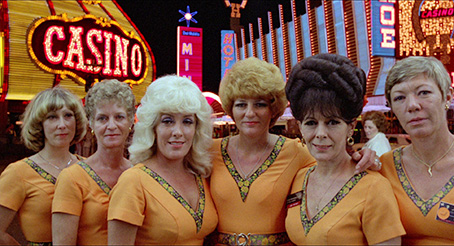
Essence of Life (25:08)
The first half of what is essentially a two-part chat with director Godfrey Reggio and composer Philip Glass (the second half is on the Powaqqatsi disc) not only provides and interesting insight into the film itself, but the working methods of both Reggio and Glass, who are very open here about their collaboration and the process of creating the film. Reggio also talks about his early film work with the Institute of Regional Education (IRE), which he co-founded, and touches on his fourteen years training to be a monk with the Congregation of Christian Brothers, and how this has influenced his filmmaking and his outlook on life. Glass outlines how he approached the scoring of one sequence in particular, and Reggio reveals that the film that changed his life and opened his mind to the possibilities of the film medium was Luis Buñuel's Los Olvidados, which he describes as being equivalent to a religious experience. He has nothing but praise for composer Glass and cinematographer Ron Fricke, whom he describes as "a legitimate American genius", and at one point says of Koyaanisqatsi, "For some people it's an environmental film, for some people it's an ode to technology, for some people it's a piece of shit, for other people it moves them deeply... it depends on who you ask." An excellent companion to the film.
Theatrical Trailer (2:23)
A bold attempt to capture the essence of a film that must have given the trailer makers some sleepless nights. Considering they only had two-and-a-half minutes to work with, this is not at all bad, and ends with the tagline, "Until now, you've never really seen the world you live in." Too right.
Powaqqatsi
Impact of Progress (19:56)
The conversations with Godfrey Reggio and Philip Glass continue in this equally engaging second half to the above detailed interview. As is appropriate, the focus here is more on Powaqqatsi, which Reggio describes as being the southern hemisphere flipside of the northern hemisphere focussed Koyaanisqatsi. Reggio outlines the intentions for the film and denies the accusation that he is romanticising poverty, and provides some useful detail on working with co-cinematographer Graham Berry on the opening mud-carrying scene. Glass, meanwhile, talks about how his growing interest in world music helped shape the score, and suggests that it doesn't matter whether Reggio's images or the his music come first, as the two usually change places somewhere along the way. Both men also touch on completing the trilogy with Naqoyqatsi, and Glass reflects on the fact that it's taken them twenty-four years to do so. He also telling says of the difficulties they faced getting the films funded that "there'll be people lining up to see the movies, but people are not lining up to produce them."
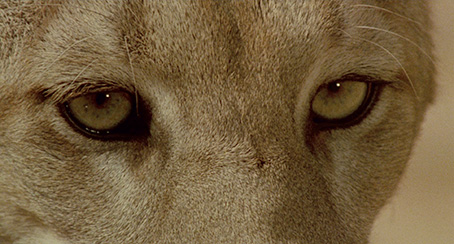
Anima Mundi (29:05)
Restored by MIR Cinematografica and Cineteca di Bologna in September 2010, Anima Mundi (technically a short at 29 minutes) was made in 1992 by Godfrey Reggio, once again in collaboration with Philip Glass. Produced for the World Wildlife Fund, it was apparently designed to convey a "kind of reverence for every living species". Very much in the style of his previous features, Reggio's focus here is the diversity of earth's animal life (and not just the cuddly ones) and the beauty and richness of nature, which reflects Reggio's own observation in the interview above about the appeal of diversity: "How boring the world would be if it had one flower, one terrain, one language, and one way of doing things". Here the structural decisions are more visible than in the features, with shots of various animals performing similar actions cut together to emphasise the commonality that binds them. The footage itself is often captivating, and Reggio repeatedly returns to the film's signature image, where the eyes and faces of a variety of animals are framed in intimate close-up, giving you the sense that the animals are watching us as closely as we observe them. The footage itself was likely all shot on 35mm and the HD restoration here really showcases that, particularly in those close-ups, which boast a fabulous level of detail and beautifully pitched contrast. As you would expect, the result is very seductive, though it really does owe a huge debt to Philip Glass's score, which, together with Miroslav Janek's inventive editing, transforms imagery we have become familiar with through wildlife documentaries into something that feels new. Given his extensive experience working on wildlife films, I couldn't help thinking that Camus should have been the one to cover this particular extra, particularly as some of the footage used was sourced from a company for whom he worked for many years. But I have the discs and he is currently busy editing, erm, wildlife footage.
Theatrical Trailer (2:05)
Framed 4:3 but in rather good shape, another valiant and largely successful attempt to capture the flavour of the film for an audience already primed by Koyaanisqatsi.
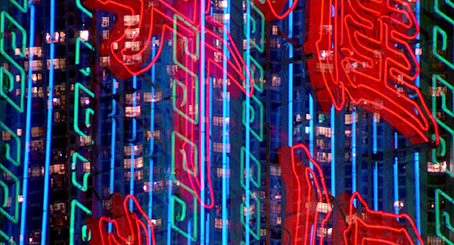
Plus...
Full Colour Booklet
The booklets that accompany Arrow releases, particularly those on the Arrow Academy strand, are starting to give the ones that come with Masters of Cinema discs a serious run for their money. This one is up there with the best MoC equivalent in terms of its content and presentation actually surpasses them. A full colour, matt printed, landscape booklet, this clocks in at a seriously impressive 72 pages and took me well over an hour to read and digest. It kicks off with an appreciation of both films by film writer Anton Bitel, who personalises the experience of first seeing Koyaanisqatsi and provides a compelling analysis of the films themselves. This is followed by extracts from contemporary reviews of Koyaanisqatsi, some of which are astonishingly sniffy about a work that is now held in very high regard, with Variety dismissing it thus: "When Hollywood is rightfully accused of frequently turning out the same old stuff (often badly), any film that's unique, inventive and pioneering should be welcomed. Still, when the result is as simplistic and interminable as Koyaanisqatsi, it's back to the drawing board." Yeah, thanks for that. Next up is my favourite inclusion, an article by Ron Gold from the March 1984 issue of American Cinematographer on director of photography Ron Fricke and his work on Koyaanisqatsi. For some this will be a chore, with its detailed information on cameras and film stock, but for anyone who has been involved in shooting film this is wonderfully insightful stuff (frankly if you're working – or hoping to work – as a cameraperson you should already have a subscription to American Cinematographer). Next up is an essay on Philip Glass by Michael Brooke, who provides a comprehensive overview of the composer's film career – if you're not familiar with Glass's other film scores then this is the perfect place to start. This is followed by a piece on the film's executive producer, Francis Ford Coppola, by Peter Cowie, a really interesting article that focuses on the legendary director's often less publicised role as a producer of other filmmakers' work and his involvement in getting Koyaanisqatsi to the screen. Finally there's a short but worthwhile piece on Anima Mundi by Jean-Baptiste Gouyon. Rounding things off are details of the transfer, production credits and a sizeable collection of stills from the films. Superb.
As fans of the trilogy will probably be aware, all three films are available on Blu-ray in a single package in the US as part of the Criterion Collection, together with some of the extra features here and a few more besides. The package does, however, retail at almost $64, and that's without the postage to the UK and the possible extra financial smack should the UK customs get their grubby hands on your order. It's also region A coded, so unless you have a multi-region Blu-ray player (some of us do, many I suspect do not) you're going to be stuffed. This Arrow Academy 2-disc set will also set you back a few quid, but the quality of the transfers, the extra features and the excellent booklet do justify the cost, particularly given that some Hollywood studios are now asking £25 for a single film in a regular case with only a sprinkling of extras. For my money these are the two best films of the trilogy (I've never been quite as taken by Naqoyqatsi) and they look and sound better here than I've ever seen and heard them and are packaged with the sort of loving care that you only get when such releases are put together by true enthusiasts. It's the policy at Outsider that whoever reviews a film gets to keep the disc (there's no other payment for their work, after all), and as Camus covered the movies I soon have to pack these Blu-rays into a well-padded jiffy bag and send them his way. It's a mark of my enthusiasm for this release that even before I post them I'll have ordered my own copy. Highly recommended.
* I lied - but it was true when I wrote it. Honest.
|